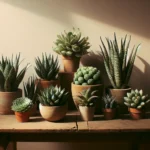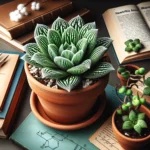Introduction to Haworthia
Welcome to the fascinating world of Haworthia, where the allure of succulents is undeniable and every plant tells a compelling story of resilience and beauty. Imagine a cluster of star-like rosettes, nestled together as if whispering secrets of survival in the harshest of climates. This is the essence of the Haworthia genus, a collection of small, rugged plants that captivate with their intricate patterns and jewel-like transparency.
Renowned for their ease of care and striking appearance, Haworthias have become a cornerstone in the gardens of both amateur and veteran succulent enthusiasts. Picture the dramatic silhouette of a Haworthia cooperi, its plump, translucent leaves shimmering like droplets of morning dew—a real-life example of nature’s artistry. It’s no wonder why these elegant succulents are often positioned in places of honor, brightening up office desks and living room windowsills with their quiet, enduring charm.
But what truly sets Haworthia apart from other succulents? It could be their remarkable ability to thrive in low-light conditions, an extraordinary feature that allows them to adapt to various environments with grace. Or perhaps it’s their forgiving nature, requiring minimal attention while generously offering back a touch of green serenity. With their unique leaf windows, Haworthias invite us to gaze into their intricate world—a tiny exhibit displaying the grandeur of the natural design.
Embark on your own adventure with these succulent marvels by exploring more about their care instructions and distinctive characteristics. Begin your journey today; you might just find that the Haworthia is the enduring companion you never knew you needed.
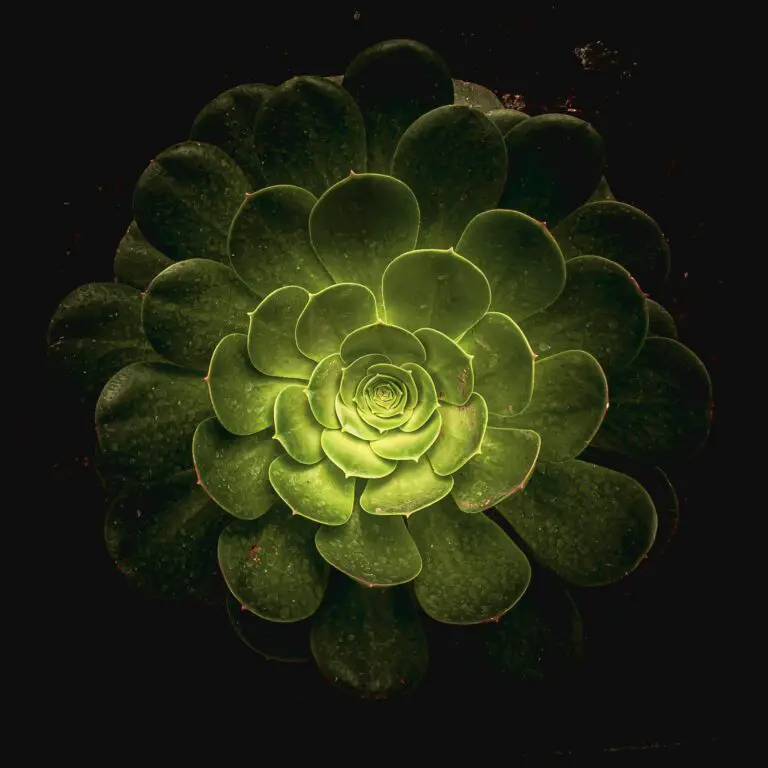
Optimal Haworthia Placement
Let’s chat about finding the sweet spot for your haworthia — that perfect perch where it basks in just the right amount of sunbath and snuggles in an ideal temperature range. Think of it as real estate for your succulent: location, location, location!
First off, light! Haworthia is quite the demure diva when it comes to its sunbathing routine. It craves bright, indirect sunlight, much like the dappled light it would enjoy under the canopies of its native South African home. Too much direct sun, and its leaves throw a fit, turning an unsightly red or brown as a plea for shade. On the flip side, plop it in a too-shady corner, and it’ll sulk by stretching awkwardly towards any light source. Get a glimpse into their light-loving world with this handy guide on haworthia light requirements.
Now, for temperature: imagine your haworthia humming contentedly in a cozy 65-75°F (18-24°C) range. It’s cool with occasional dips into the 50s, but freeze it in anything below 30°F (-1°C), and you’ve got a succulent popsicle on your hands. Sure, it’s hardy — but not that hardy.
Here’s a pro tip: maintain a soothing environment and shield your haworthia from drafts near windows or heating/cooling vents. Want to deep-dive into the ideal haworthia habitat? Check out this video for some .
Wondering how to create the perfect home setup for your haworthia? Visit our ultimate guide on succulent soil and unearth some fascinating insights into creating an environment your succulent will adore. Trust me, with a little know-how, your green thumb will be the stuff of legends!
Watering Your Haworthia the Right Way
When it comes to keeping your Haworthia happy, water is as vital as the sunshine it basks in, yet it’s a balance game that can tip your plant from thriving to barely surviving. Imagine you’re on a tropical vacation, enjoying a refreshing drink; well, your Haworthia craves that same kind of hydration strategy that’s just right—not too little, and definitely not too much.
First things first, let’s talk timing. These pint-sized succulents spring from arid regions, which means their thirst meter is a bit different than your average houseplant. You want to water deeply, allowing the soil to become fully moist, and then—and this is key—allow the soil to dry out completely before the next watering session. A good rule of thumb is every two to three weeks, but be flexible and adjust according to the season. Summer days might see your green buddy drink up more often, while in winter, it’s more of a sip here and there.
The pour is where it’s at! Aim for a delicate shower around the base of your Haworthia, rather than a top-down drizzle. Think gentle rainfall, not a splashy water park. This method encourages roots to reach down for moisture, fostering a robust root system. Avoid wetting the leaves to prevent fungal issues—the base of the plant will guide the water where it’s needed.
Now, how do you know if you’re hitting the mark? Keep a watch for tell-tale signs. Under-watered Haworthias will develop wrinkled, shriveled leaves as they deplete their stored water. On the flip side, over-watered ones might get squishy and discolored. Perfectly watered Haworthias stand firm, with plump leaves and a vibrant demeanor.
If you need a deeper dive into the succulent world, our guide on the ultimate guide to succulent care offers a treasure trove of insights to nurture your botanical companions to their full glory. Just remember, water wisely, and your Haworthia will reward you with growth that defies expectations, proving once again that in the world of plants, less is often more.
Soil and Fertilization Requirements
When it comes to nurturing your Haworthia, finding the ‘sweet spot’ for its roots to thrive is paramount. Let’s talk soil mixtures—crucial for ensuring your succulent’s success. Imagine you’re crafting a bespoke suit, one that allows just the right amount of air and water to keep you comfortable; that’s the sort of precision we’re aiming for here.
For Haworthias, you want a soil mix that’s akin to a well-draining gravel path as opposed to a water-logged bog. The ideal mixture? A blend of cactus potting mix, mingled with perlite or pumice, ensuring fast drainage and airy roots. These components come together to emulate the Haworthia’s native South African terrain where water is scarce, and the soil is loose and rocky.
But it’s not just about the mix; it’s also about timing. Feeding your Haworthia involves a delicate dance with fertilizer. Spring into action in the growing season—spring and summer, and consider a balanced, water-soluble fertilizer, diluted to half strength, every four weeks. It’s like a seasonal menu that changes to bring out the best in a dish, except this dish is your ever-resilient Haworthia.
Remember, overfertilization is the equivalent of overindulging; it can lead to salt build-up in the soil and can harm your plant’s roots. Think of fertilizer as vitamins, not food; an occasional boost, not a daily necessity. Moderation is key. And if you ever notice your Haworthia sprouting with vigor and sporting shiny, plump leaves, you’ll know your efforts in soil and fertilization balance are paying off.
Nothing beats a real-life demonstration, so why not take a look at this practical guide:
By nurturing your Haworthia with the precise soil mixture and a judicious fertilization regime, you offer it an environment where it can stand tall and proud, just like the vivid landscapes of its motherland. And as each day passes, you get to witness the quiet yet remarkable journey of growth that unfolds within those spiky, stoic leaves. A true succulent spectacle!
The Art of Repotting Haworthia
Fancy having a thriving huddle of greenery at home? It’s not just about a water-and-go routine with your haworthia. Repotting plays a pivotal role in the well-being of these succulent charmers, and getting it right can be akin to finding the secret spot that makes your green buddy burst with vigor. Let’s dig in!
We’re not just tossing soil and hope together when we talk about repotting. It’s about timing, technique, and knowing the signs that it’s the right moment for a change. Generally, you’ll want to consider repotting haworthia every two to three years, or when you notice that it’s cozying up against the edges of its current pot, pleading for space.
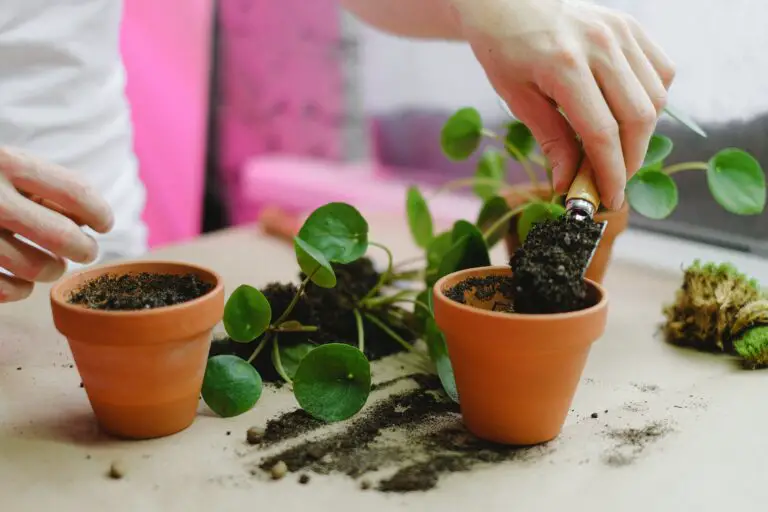
Now, imagine this: You’ve got your tools ready, and the humble haworthia at hand, its root ball cradled like a precious jewel. It’s not just about uprooting; it’s a strategic embrace, ensuring those tender roots remain undisturbed as much as possible. A soft shake to loosen the old soil, a gentle tease to free the roots – it’s almost therapeutic!
But here’s where the real artistry comes in. It’s not just plopping it into a new pot; it’s creating a haven of fresh soil – airy, well-draining, and just right for this desert gem. Got a root or two that looks like it’s seen better days? Snip with care, because every cut is a message to your haworthia: “Grow, my pretty, grow!”
Visualize placing the plant in its new abode, the roots fanning out elegantly, as if stretching in the morning sun. A sprinkle of earth gently blankets the roots, and voila – you’ve crafted the perfect setup for your succulent sidekick to take root and flourish. With each grain of soil, you’re setting the stage for a spectacle of growth and resiliency.
Pro Tips for Perfect Repotting
Remember, this isn’t just a horticultural task; it’s a bonding session with your plant. So as you slide your haworthia into its new home, chat with it, encourage it, and maybe even share a joke. After all, plants are known to thrive with a little conversation, and it doesn’t hurt to share a laugh with your leafy companion.
Before you know it, you’ll see signs of gratitude through sprouting offsets or a vibrant flush of color. And while you bask in the glory of your repotting masterpiece, know that your haworthia is more than just surviving – it’s living its best life, all thanks to your attentive care.
Managing Light and Temperature
When it comes to nurturing your haworthia, lighting up its life is key—but like a complex character in a novel, haworthia has its own particular preferences. Imagine a shaded savanna where these succulents naturally flourish, basking in gentle sunlight dappling through trees. They prefer indirect light, a soft radiance rather than the harsh glare of direct afternoon beams. If your haworthia could speak, it’d likely request a spot near a north-facing window, or perhaps a sun-splashed countertop that avoids the sun’s intense midday curtain call.
Here’s a real-life tip: use sheer curtains as a buffer to mimic the haworthia’s preferred environment. It’s like sunglasses for your plants—a fashion statement and protective gear in one. Keep it in a room where it can enjoy the morning sun, which is akin to a gentle spa treatment for these resilient yet delicate plants.
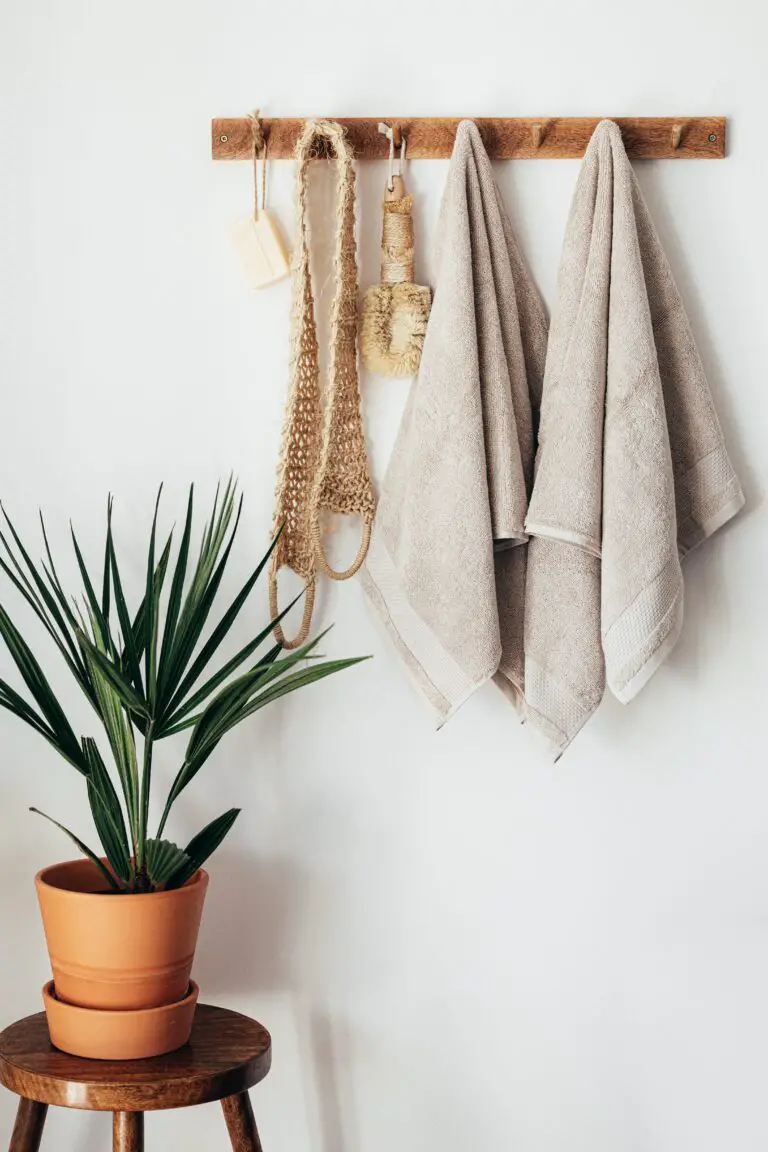
Temperature is another conversation starter in your haworthia’s diary. They’re not fans of the cold and certainly don’t care for frost. Think of a spring day with temperatures that hug the line of comfort—between 65°F (18°C) to 85°F (30°C) is where they do best. In the winter, it’s like they retreat to their cozy den, bristling at temps below 50°F (10°C). The trick is moderation. A stable temperature that doesn’t swing wildly is like steady background music—calming and just right for growth.
A practical example? Avoid placing your haworthia next to drafty windows or doors in winter. Instead, nestle it in a stable environment, like a bookshelf in your living room where it can stay snug and secure, quietly contemplating its surroundings. Remember, the mantra for haworthia care is about creating a zen habitat: gentle light and temperate moods. Tune into these vibes, and your haworthia will not just survive; it will thrive.
Propagating Haworthia Successfully
If you’re charmed by the plump, geometric leaves of haworthia and can’t get enough, why not dive into the world of propagation? It’s easier than you imagine! Not to mention, watching your succulent family grow is incredibly satisfying. Let’s break down the propagation game into simple steps you can start experimenting with today.
Starting with Offsets: Your Mini Haworthia Army
Offsets are your best bet if you’re a newbie to haworthia propagation. These are the baby plants that sprout at the base of your mature haworthia, often referred to as “pups”. Once they’ve got a few roots of their own, it’s time for some tough love. Gently separate them from the mother plant, give them a little substratum to call home, and voila—you’re a proud hawothia parent to a new generation!
Real-life example: Imagine your haworthia as a parent tree and each offset as a little acorn, ready to become mighty oaks in their own tiny pots. With a little patience and care, each acorn ushers in a new era of greenery, just like your offsets will do.
Leaf Cuttings: A Slice of Haworthia Heaven
Got a steady hand and a bit more experience? Try your hand at leaf cuttings! Choose a healthy, plump leaf and make a clean cut. Next, enter the waiting game; let your leaf callous over for a few days. Then, with a sprinkle of rooting hormone on the wound (it’s like magic dust!), place it on well-draining soil and mist occasionally. You’ll feel like a true green magician when tiny roots begin to appear!
Here’s a visual for you: Each leaf is like a piece of a puzzle, and with the right conditions, they’re soon to reveal an image of a baby haworthia. Just as a puzzle takes shape piece by piece, so shall your leaf cutting enroot itself into a delightful new plant.
Growing from Seeds: The Haworthia Frontier
If you’re up for a challenge, haworthia seeds will test your gardening mettle. Starting these slow-growers from seed is like brewing your very own botanical storm in a teacup. Sprinkle them on top of a sandy substrate, keep them moist (not wet!), and stable temperature is key. The sprouts are delicate and take time, but imagine the pride when you witness those first signs of life. It’s like cheering on your favorite underdog team to a triumphant victory!
Think of each seed as a tiny spaceship, embarking on an epic journey through the uncharted cosmos of your mini nursery. With you as the commander of this mission, prepare for the slow but oh-so-rewarding rise of new haworthia life.
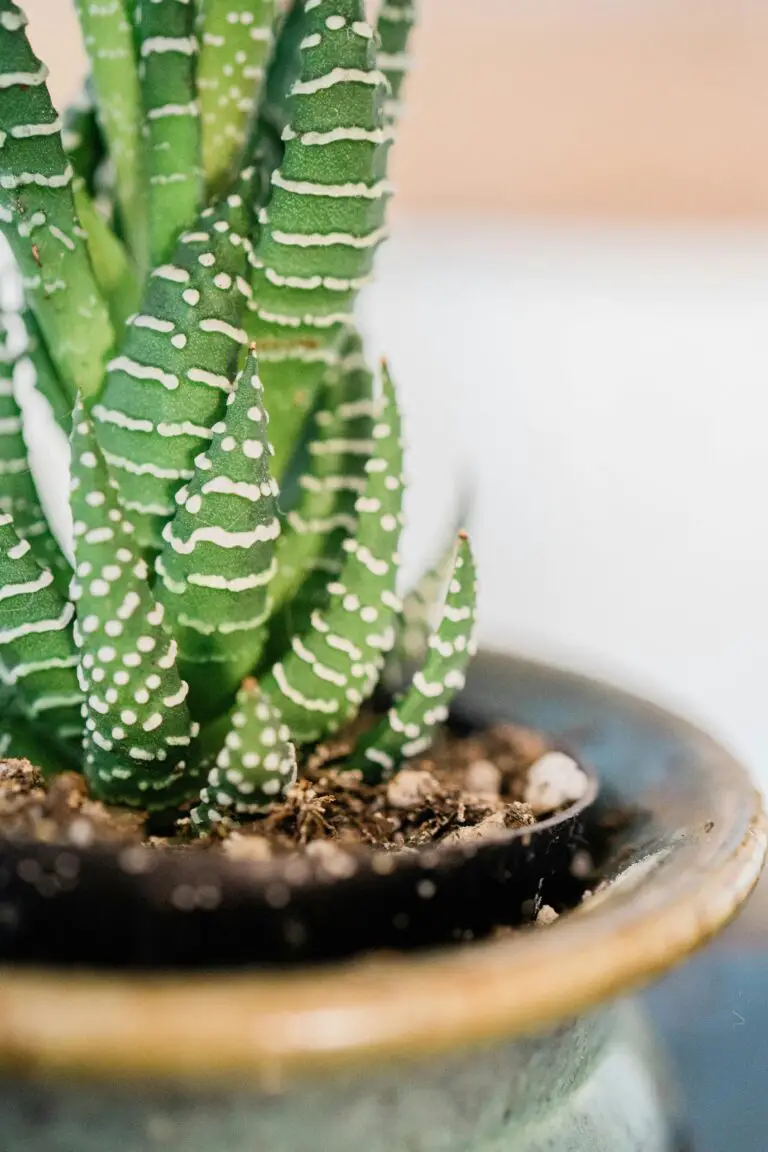
Whether you choose offsets, leaf cuttings, or seeds, patience is the secret ingredient to haworthia propagation success. These succulent jewels require a nurturing hand and a watchful eye, but the rewards are as rich as the experience. Begin your propagation journey today and unearth the wonders of growing your very own haworthia army!
Combatting Pests and Diseases
The journey to a flourishing collection of haworthia starts with understanding the adversaries: pests and diseases. Haworthia enthusiasts know all too well the dread of spotting the first signs of infestation or infection in their green companions. It could be a parade of aphids marching to a sweet feast on the leaves, or the sinister trail of mealybugs nestling into the plant’s cozy corners. Perhaps it’s the unexpected appearance of small, brown scale insects that seem to have set up a fortified camp overnight.
So how do we foil these stealthy invaders? Let’s start with prevention. The key here is vigilance and routine. Inspecting your haworthia regularly is like appointing a sentinel that never sleeps—always on the lookout for tiny intruders. Quarantine new plants before introducing them to your verdant haven; this simple act can save you a world of hassle. And cleanliness, next to greenliness, is a gardener’s best ally. Keeping your plant’s environment free from debris and dead leaves denies pests a toehold.
Now, despite our best efforts, pests have a knack for finding their way in. When they do, it’s time for action. Effective treatment options include a gentle shower with insecticidal soap or a targeted application of neem oil, a natural pesticide that ticks all the right boxes for environmentally conscious gardeners. It’s like sending in the cavalry without the collateral damage.
But what of diseases? Fungal foes and bacterial blights relish the opportunity to exploit any weakness. Overwatering, the bane of many succulent caretakers, plays right into their hands, offering a moist and inviting environment for these pathogens. Here, the answer lies in restraint and precision—water your haworthia with care, ensuring proper drainage and dry spells that mimic their natural arid habitats.
And should your haworthia succumb to disease, don’t despair. Trim away affected areas with sanitized shears, like a skilled surgeon excising the malady, and adjust your care routine to prevent a recurrence. Embrace these practices and watch your haworthia not only survive but thrive, as you master the secrets of impeccable care.
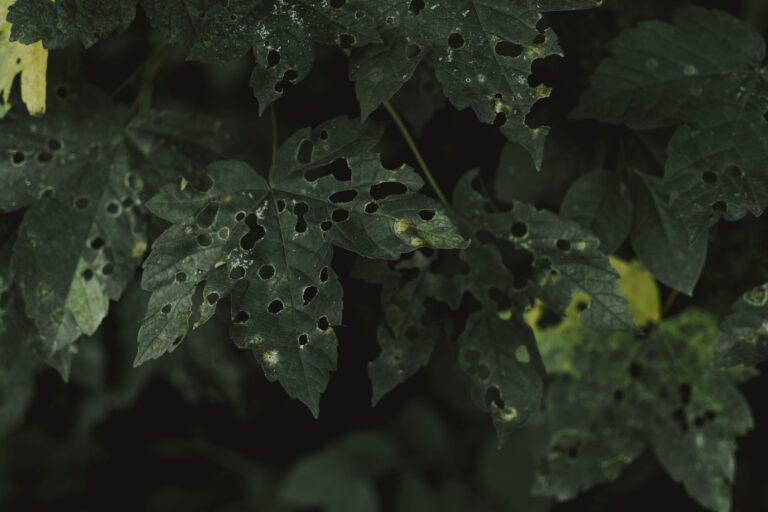
Incorporating Haworthia into Your Decor
Envision transforming your living space into a display of nature’s artwork with little gems of green delight sprinkled around. Haworthia succulents, with their captivating patterns and compact size, provide an extraordinary opportunity to infuse your interior decor with a touch of the exotic. Let’s dive into a treasure trove of creative ideas that not only uplift the visual appeal of your indoor spaces but also prioritize the health and well-being of these charming plants.
Imagine a chic terrarium gracing your coffee table, each one a miniature landscape, where Haworthias play the lead role amidst sand, rocks, and assorted succulents. The versatility of these terrariums allows them to complement various styles, from minimalist to bohemian. Picture a single Haworthia elegantly perched on a stack of books on your side table, its slender leaves whispering stories of resilience and understated beauty.
Consider the allure of a living wall, where Haworthias become the stars of a vertical tapestry of life. Paired with geometric pots against a backdrop of rustic wood or modern metal, this setup isn’t just a visual feast—it’s a conversation starter. A living wall not only enhances the aesthetic but also serves as a showcase of your personal taste and a testament to your green thumb.
When opting for potted displays, remember the power of repetition. A cluster of Haworthia pots on a windowsill creates a rhythmic visual impact that draws the eye and calms the mind. Using pots of similar shapes but varying textures can add an element of sophistication while maintaining a harmonious atmosphere. It’s a balance between uniformity and spontaneity that can easily be achieved with these forgiving succulents.
Kitchen counters are often underutilized canvases for plant decor. Spice up this space with small Haworthias planted in whimsical teacups or sleek ceramic planters. Not only do they add a pop of greenery to your culinary domain, but they also thrive with the occasional steamy atmosphere from your cooking endeavours. It’s a delectable combination of practicality and allure that refreshes both the room and your spirit.
Remember, positioning matters for the health of your succulents. Haworthias relish bright, indirect light, so placing them near a north-facing window or under the gentle wash of a grow light can ensure they flourish. The right location offers the dual benefit of showcasing your plants in the best possible light while catering to their growth requirements.
Why not witness the diversity of Haworthia decoration through the lens of fellow enthusiasts? Below is a video brimming with inspiration on how to showcase these succulents in your home.
Embrace these suggestions, and you’ll soon find that incorporating Haworthia into your decor is more than just a design choice—it’s a mindful cultivation of beauty and serenity in your everyday surroundings. Remember, the only limit is your imagination.
Troubleshooting Common Haworthia Issues
Gardening with succulents like haworthia can sometimes feel like a walk through a minefield of potential issues—except, instead of explosions, you’re met with yellowing leaves and stunted growth. Fear not! Let’s dig into the dirt of diagnosing and resolving these typical problems that leave haworthia owners scratching their heads.
Picture this: you’ve given your haworthia the sunniest spot on the windowsill, only to notice its leaves turning a shade reminiscent of oversteeped green tea. Sunburn! Yes, these succulents adore light, but too much direct sun is like a weekend at the beach without sunscreen. The solution? A sheer curtain to filter those harsh rays or a new spot where the light is bright yet indirect, like a north-facing window.

But what if you witness your haworthia’s leaves puckering faster than a prune in a rainstorm? Under-watering could be the culprit. These succulents are drought-tolerant, but they do need a drink now and then. Picture them in their natural habitat—they revel in the occasional rainfall. Mimic this at home with infrequent but thorough waterings, allowing the soil to dry out between sips.
Now, let’s talk root rot—the silent killer of many houseplants, haworthia included. It’s like plant gangrene; the roots turn soft, black, and mushy. Often caused by overenthusiastic watering or poorly draining soil, the key to avoiding this watery grave is balance. Ensure your potting mix is well-draining and you’re not leaving your haworthia sitting in a puddle of its own despair. A terracotta pot can be a real lifesaver here, helping excess moisture to evaporate.
Ever seen a haworthia with leaves that resemble more a limp handshake than a firm greeting? Mealybugs might be to blame, throwing secret parties at the expense of your plant’s vigor. These tiny pests are like uninvited guests that refuse to leave. Wipe them off with a cotton swab dipped in alcohol, or introduce natural predators like ladybugs to crash their party for good.
Last but not least, let’s consider environmental stress, which can cause haworthia to halt faster than a rabbit in headlights. Sudden temperature changes, drafts, or a move to a new location can leave your plant feeling unsettled. Give it some time to acclimate, and maintain a consistent care routine to help it adjust to its new surroundings.
Remember, each issue is a learning opportunity. Once you’ve played plant detective and resolved the problem, your haworthia will bounce back, tougher and more resilient than ever. Keep a close eye on your green companion, and soon enough, you’ll have a thriving haworthia that’s as tough as nails.
Frequently Asked Questions
Curious about keeping your haworthia happy and healthy? You’re not alone! Let’s dig into some of the most common, nitty-gritty questions plant enthusiasts have about haworthia care.
How often should I water my haworthia during winter?
Picture this: it’s a chilly winter day, and your haworthia is tucked in its cozy spot. While it might seem counterintuitive, your little green friend needs less water during the cold months. Consider the soil a tell-tale sign—only water when it’s completely dry, generally every few weeks. Imagine your succulent as a camel; it stores water and uses it judiciously!
What are the signs my haworthia is getting too much sunlight?
If your haworthia could talk, it might say, “I love the sun, but not a sunburn!” These resilient plants enjoy bright, indirect light, but if you notice your plant’s leaves turning red or white, or spots that look sunburned, it’s crying out for shade. It’s like that friend who always forgets sunscreen at the beach—ouch!
Feel like watching instead of reading? Check out this helpful video for a visual guide to haworthia care:
Questions addressed, myths busted, and care secrets unearthed. With these tips, your haworthia is set to be the envy of succulent connoisseurs everywhere!
